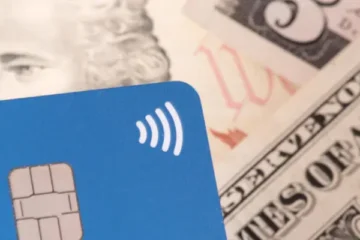How to Apply for a Student Loan: A Step-by-Step Guide
If you’re dreaming of attending university or taking a life-changing course but unsure how to afford the tuition fees, this article is here to help!
Advertisement
Today, we’re talking about student loans, a vital resource for accessing higher education or vocational training.
Advertisement
But are student loans truly worth it? How do they work? And what should you know to avoid pitfalls? Let’s explore and answer all your questions!
What is a Student Loan?
Let’s start with the basics. A student loan is a special type of credit designed for those who want to study but face financial challenges.
Advertisement
The concept is simple: you borrow money now to pay for your tuition and repay it later. These loans are typically designed with flexible terms to support individuals starting their careers.
Unlike other types of loans (such as personal or payday loans), student loans are specifically tailored for educational purposes. They often come with lower interest rates and longer grace periods before repayment begins.
Essentially, they’re a tool to help you improve your life without creating immediate financial strain.
Types of Student Loans

Now that you understand what a student loan is, let’s look at the different types available. Not all loans are the same; each option is suited for specific needs and circumstances.
Government-Provided Student Loans
Government-funded student loans (such as Brazil’s FIES program) are offered through public initiatives. They have several benefits:
- Low or no interest rates based on family income.
- Extended repayment periods, typically starting after graduation.
- Special terms for priority fields like medicine or engineering.
However, there are drawbacks. These loans often have limited availability, require applicants to meet specific criteria (e.g., taking national exams or proving family income eligibility), and may involve a competitive selection process.
Private Student Loans
If government loans are unavailable or you need a quicker process, private student loans from banks and financial institutions are an alternative. Here’s how they differ:
- Interest rates may be higher than government loans but lower than standard personal loans.
- Flexible eligibility requirements but may require a guarantor or proof of income.
- Easier negotiation of repayment terms and conditions.
In short, government loans are ideal when available, but private loans can be a valuable option when necessary.
How to Apply for a Student Loan
Now that you understand the types of student loans available, let’s learn how to apply for one. While the process is straightforward, careful planning is essential to choose the right option and avoid unexpected issues.
With proper preparation, you can secure the financial support needed to focus on your studies. Here’s a step-by-step guide:
- Research Your Options: Start by understanding which loan best suits your needs. Compare government programs with private bank loans to make an informed decision.
- Prepare Required Documents: Generally, you’ll need identification (e.g., national ID or tax ID), proof of address, proof of income, or a guarantor’s documents.
- Simulate Costs: Use a loan calculator to determine the total repayment amount and ensure it fits within your budget before signing up.
- Fill Out the Application: For government programs like FIES, apply online and then submit the required documents. For private banks, complete the process in person or online.
- Sign the Contract: Once everything is approved, sign the agreement and start your educational journey!
Additional Tip: Always read the fine print before signing any agreement.
Interest Rates and Repayment Terms
Understanding interest rates and repayment terms is crucial when applying for any loan. These represent the “cost” of borrowing money from a financial institution. Student loans often have lower interest rates, but it’s essential to stay informed.
- Fixed Interest Rate: Payments remain the same regardless of economic conditions.
- Variable Interest Rate: Rates may fluctuate over time based on benchmarks like the Selic rate.
Also, pay attention to the repayment period. Longer periods mean paying more interest over time, but smaller monthly installments can make it easier to manage your budget.
Grace Period and Repayment Timeline
One of the significant advantages of student loans is the grace period, which allows you to delay repayment. For example, with FIES, you begin repaying the principal amount only after graduation.
The repayment timeline refers to when you start paying back the loan. Securing a job shortly after graduation can make it easier to integrate these payments into your budget.
Credit Score and Financial Impact
While student loans are convenient tools, they also carry responsibilities, as they can affect your credit score and financial situation.
- Benefits: Timely payments improve your credit score, making it easier to access other loans, such as for a car or home, in the future.
- Drawbacks: Late or missed payments can harm your credit score and financial standing, potentially leading to registration with credit protection services.
Advice: Plan your expenses carefully and prioritize loan repayment.
Alternatives to Student Loans
If borrowing money makes you uneasy, or if you don’t qualify for a student loan, don’t worry. There are alternative ways to fund your education.
These alternatives can be just as effective as loans and, in some cases, more advantageous since they help you avoid interest and long-term debt.
From scholarships to direct negotiations with universities, there are plenty of options for those willing to research and plan. Here are the main solutions:
- Scholarships: Many institutions offer partial or full scholarships to low-income or academically outstanding students.
- Grants: Some programs provide financial assistance that doesn’t need to be repaid.
- Work-Study Programs: Part-time jobs can help cover tuition costs and provide valuable work experience to enhance your resume.
- Direct Negotiations with Universities: Some universities offer in-house financing programs or discounts for upfront payments.
Tips for Successfully Managing a Student Loan
Getting a student loan is just the beginning of the journey. The real challenge lies in managing the debt responsibly while investing in your future.
Student loans make education more accessible, but they also require commitment to avoid becoming a financial burden.
Managing your student loan effectively isn’t difficult, but it does require discipline and proper financial planning. Timely payments can help you build a strong credit history, while delays can complicate your financial situation.
Here are some practical tips to help you manage your expenses and avoid problems:
- Create a Financial Plan: Clearly understand how much you can afford to pay each month.
- Build an Emergency Fund: Save a small amount every month to prevent late payments.
- Use Financial Management Apps: Organize your expenses and avoid missing payment deadlines.
- Negotiate When Necessary: If finances become tight, contact the institution to renegotiate terms.
Frequently Asked Questions About Student Loans
What is the minimum age to apply for a student loan?
This varies by institution, but it’s generally 18 years old. Minors can apply with a parent or guardian.
Can I refinance my student loan?
Yes! Many banks allow refinancing to improve repayment terms.
Are student loans eligible for tax deductions?
In some cases, yes. It’s best to consult a tax professional for specific details.
Investing in education is an investment in your future. Student loans can be the bridge you need to make your dreams a reality, but it’s crucial to understand how they work and make careful decisions.
Plan, research, and remember: education is the best investment you can make in yourself!





